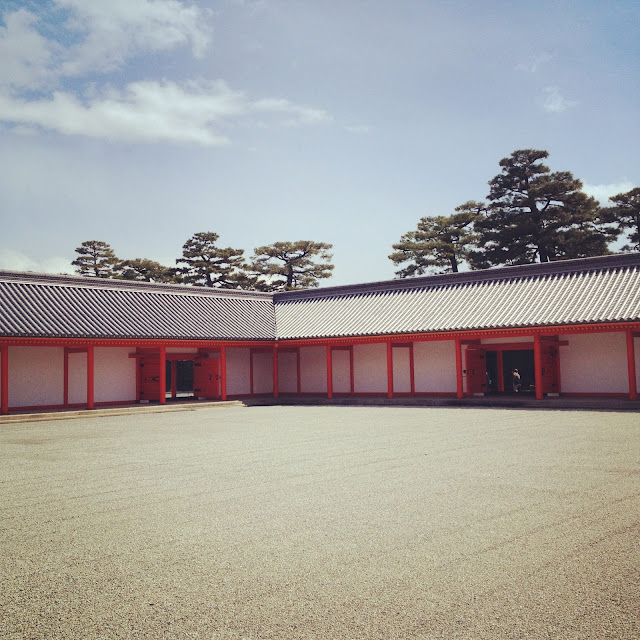Bojan and I awoke to the sound of knocking at the door. We had slept in and needed to check out immediately. I got myself together and headed out the door to catch the bus down to Kyoto station to meet my sister and her school group. Our destination for the day was Nara, but more specifically, Todai-ji Temple. We walked through the rather uninspiring streets from Nara station station and eventually reached the beginning of the long approach towards the temple. The day was warm and sunny, therefore drawing throngs of people to this sacred site. Haggard wild deer roamed around enjoying the attention and being consistently fed by all.
As much as I was there to see Todai-ji, I was just happy to be present with my little sister. Witnessing the joy she was having with her friends and teachers and the obvious fascination with her new surroundings was very fulfilling. A fond moment was making her laugh to the point of tears when I highlighted a slight breeze coming through a precariously placed hole in my pants as I posed for a photo.
After being completely overwhelmed by the enormous temple, the group and I gradually strolled back to Nara station stopping for ice cream, drinks and odd treats along the way. By the time we all got on the Kyoto bound train most of us conked out and proceeded to sleep most of the way back. Once we got off, I organised with Madeline’s teachers to take her with me for the evening as this would be the last time I see her for another 6-8 months. We set off together with the first stop being my hostel to pick up Bojan and exchange some items with Madeline from my luggage. In the very sociable lobby of the Khaosan Guest House, Madeline handed over my Easter presents from home ie. Cadbury chocolates. I stood up and shared them around with the very appreciative staff and other guests. I read a great letter from my Aunty and enjoyed the cards my rad little cousins Jaz and Gem made for me.
Once everything was organised we set off along the blossom laden canal in search of a long awaited dinner at Ootoya. Bojan amused us with his clumsiness banging his head before dug into some hearty pseudo Japanese meals of chicken, rice and salad. Time was of the essence as I needed to get Madeline back to her hotel at a reasonable hour. We walked down the charming Pontocho Street, popping our heads into bars and izakaya's before being offered by a slightly intoxicated gentleman to take our group picture. Quite hilarious.
Bojan went off to say goodbye to some friends and Madeline and I soaked up each other’s company at a small Izakaya full of excited locals whom where bundles of fun and very inquisitive. We met up again with Bojan, headed back to the guesthouse to grab our bags and took a taxi to the station. Bojan waited with our gear at the station while I escorted Madeline to her hotel. Her teachers where in the lobby and spoke for a while before I had to do the difficult thing of saying goodbye to Madeline. She was a blubbering mess. Bless her heart.
I walked solemnly back to where Bojan was waiting only to be halted by a feisty altercation between a very disgruntled man and the train ticket inspectors. The young officer in uniform was doing his best to calm the man down but was clearly frightened as he was being physically manhandled. I waited to see if it was going to get out of hand and intervene Lenny Hayes style but thankfully this was not necessary. In hindsight, a bearded foreigner arresting a hot headed local man probably wouldn't have worked in my favour in the ensuing policeman’s eyes.
If that wasn't enough emotional excitement for the evening, I returned to where Bojan was waiting only to find a Japanese girl crying uncontrollably in the station. She was well dressed and slumped against a wall fumbling with her phone. Her howls spoke of shock and bottomless sadness. She vaguely pulled herself together and slumped silently as we moved towards our Tokyo bound bus.
It was the end of a potent four days. Back to the Tokyo hustle.


































































